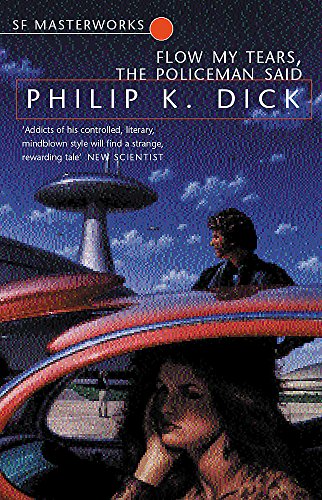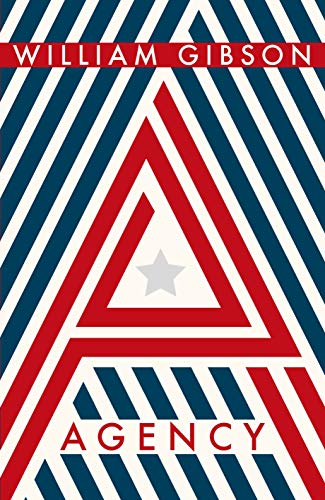Kim Stanley Robinson, Blue Mars (1996)
This wonderful book is the third in Kim Stanley Robinson’s Mars trilogy.
I read the first two books – Red Mars (1992) and Green Mars (1993) – in pre-blogging days, that is, before 2003. I was swept away by them, but I kept deferring Blue Mars. In fact, last summer I read Kim Stanley Robinson’s more recent novel 2312 (my blog post here), thinking I would never return to Mars.
Yet here I am.
The trilogy begins in what was the future year of 2020 with the first human landing on Mars. In Red Mars, a hundred selected individuals and one stowaway, to be known and revered as the First Hundred, make the journey to the red planet, and the narrative follows the engineering, cultural and political processes of colonisation. The book ends, in about the year 2060, on a hopeful note in the middle of violent conflict against the forces of Earth capitalism, the ‘metanats’, and their political arm, the UN. Though the politics and the many individual stories are fascinating, what I remember most vividly of this book is the practicalities of interplanetary travel and survival on the arid, low-gravity planet.
Green Mars deals with the terraforming project (the greening of Mars), and the continuing struggle against the Terran forces. It ends in 2127, when Earth is devastated by a huge flood and Mars attains independence. Mars is largely habitable now, with tented cities, large bodies of water, a thickening atmosphere, and a huge reflecting mirror in space that augments the effect of the sun. A longevity treatment has been developed and is almost universally available.
Blue Mars starts in 2127 and finishes in 2212, so covers nearly a hundred years. The key characters are again from either the First Hundred, well over 200 years old by the book’s end, or the next two generations. As well as sorting out Mars’s relationship to Earth and the other colonies now being established elsewhere in the solar system (including those that feature in 2312), the main global story concerns the political struggles among the different Martian groupings. The Reds, including extremist ecoteurs, want Mars kept as close to its original state as possible. The Greens want it to become ever more Earthlike. Civil war is avoided and a new constitution is thrashed out in early chapters. We follow the teething problems of the new government structure and economy, and witness the development of distinctively Martian cultures. The younger generations grow very tall by Earth standards, tend to disregard gender binaries and can be spectacularly hedonistic.
The book is full of delights. Kim Stanley Robinson is interested in everything – politics, sociology, art, music, theatre, philosophy, religion, history, engineering, geology, climatology, rocket science, brain science, psychology, linguistics, myths, fairy tales, sports, the Basque cooperatives of Mondragon and the katabatic winds of Antarctica. All this and more finds its way into the story.
There are lovingly detailed descriptions of Martian landscapes and seascapes. In one meta moment a character observes, ‘This small-planet curvature is producing effects no one ever imagined.’ Yep, and Kim Stanley Robinson describes these effects, and those of the lower gravity, in such detail that you feel he has actually been there and seen what no one ever imagined.
None of that would work without a set of characters that we care about. Each of the book’s 14 parts is narrated from a different character’s the point of view, and Robinson has an almost Shakespearean ability to disappear into his characters.
I could go on, but I want to give an example of the writing. Here’s page 76 (control click / right click to enlarge if you want to read it in full):

This is in Part Two, ‘Areophany’, told from the viewpoint of Sax Russell, one of the First Hundred who had his brain reconstituted after a stroke in the second book and has been oddly dissociated ever since. He is a brilliant scientist, committed to rational thinking and out of his depth when it comes to articulating emotional matters.
On the preceding 10 or so pages, Sax has been on a solo excursion, enjoying a Mars that is newly free from earth domination. Civil war has been averted, but only by appeasing of the Reds by removing the soletta, the mirror in space that created Earth-like warmth and light. Now, he has been caught out of his vehicle in a violent snow storm, one of the extreme weather events brought on by this removal – and the protection of his suit is almost useless against it. APS (as in Areological Positioning System) and a call on his wristpad have not helped him get back to his rover. He is facing certain death when a helmeted figure comes out of the storm, takes him firmly by the wrist and leads him to safety. He recognises his rescuer as Hiroko Ai, one of the First Hundred who is believed to have been killed. As soon as he is safe, she vanishes into the blizzard.
The high drama is over, but a lot happens on page 76.
First, there’s some deft character development. Sax manages to strip off his frozen clothes in the warmth of the car, and it hurts. But he’s Sax, always alive with scientific curiosity:
His whole skin began to buzz with the same inflamed pain. What caused that, return of blood to capillaries? Return of sensation to chilled nerves? Whatever it was, it hurt almost unbearably. ‘Ow!’
The next couple of paragraphs do a lot of work. They recap incidents from the earlier book, and they introduce a recurrent motif of this one. Since I’ve forgotten almost all the details of Green Mars‘ guerrilla struggles, I’m grateful for the recap, which is not so much a memory prompt as a general outline of what happened. (Incidentally, you could probably read Blue Mars as a stand-alone novel, but you’d have to fill in a lot of gaps from your own imagination.)
He was in excellent spirits. It was not just that he had been spared from death, which was nice; but that Hiroko was alive. Hiroko was alive! It was incredibly good news. Many of his friends had assumed all along that she and her group had slipped away from the assault on Sabishii, moving through that town’s mound maze back out into their system of hidden refuges; but Sax had never been sure. There was no evidence to support the idea. And there were elements in the security forces perfectly capable of murdering a group of dissidents and disposing of their bodies. This, Sax had thought, was probably what had happened. But he had kept this opinion to himself, and reserved judgement. There had been no way of knowing for sure.
But now he knew. He had stumbled into Hiroko’s path, and she had rescued him from death by freezing, or asphyxiation, whichever came first. The sight of her cheery, somehow impersonal face – her brown eyes – the feel of her body supporting him – her hand clamped over his wrist … he would have a bruise because of that. Perhaps even a sprain. He flexed his hand, and the pain in his wrist brought tears to his eyes, it made him laugh. Hiroko!
Stan, as he’s called in his bio, can spend pages describing a landscape (some readers might skip – I didn’t!), but he knows when to hold back. People with fresh memories of the earlier books will understand the reason for Sax’s joy. But the rest of us don’t need to be told, the joy itself is enough for us to know that Hiroko has been a key and much loved figure in the history of Mars.
Beginning with his lie when people at base finally contact him on his wrist on this page, Sax never tells anyone of this encounter, but its vivid physicality keeps Hiroko alive for the reader. In the remaining 700 pages, people report sightings, even some on Earth, none of them ever verified. In her absence she becomes a kind of genius loci, a spirit of the place – not part of the ordinary world of laboratories and constitutional assemblies, but elusive, concealed, anywhere. In the final act, when the surviving members of the First Hundred meet to remedy a glitch in the longevity treatments, I was on the edge of my seat hoping she would appear. I’m not saying if she does.
I went to Wikipedia to fill the gaps in my memory: it was Hiroko who created the spiritual underpinning of the new Martian culture – ‘a new belief system (the “Areophany”) devoted to the appreciation and furthering of life (“viriditas”)’. My understanding of viriditas is a little different from Wikipedia’s. I think of it as the universe’s impulse towards life, what Dylan Thomas called ‘the force that through the green leaf drives the flower’. It’s probably true to say that what makes the book more than a dry, overlong piece of speculation is the way on every page it bears witness to an imagination shot through with the thing that Hiroko comes to symbolise: Viriditas.
Added later: I meant to include this wonderful, terrible description of a future Earth, from page 511
Steaming, clotted, infectious, a human anthill stuck with a stick; the panic pullulation ongoing in the dreadful mash of history; the hypermalthusian nightmare at its worst; hot, humid, and heavy; and yet still, or perhaps because of all that, a great place to visit.
Ah, Earth, you’ve gotta love it!












